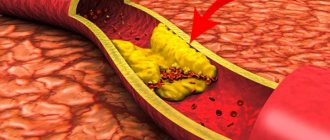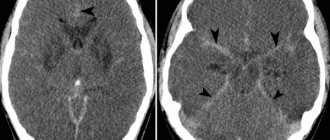Every person periodically faces severe fatigue, when the only desire left is to fall and pass out, and any obstacle on the way to the desired rest causes an attack of irritation. But once you get enough sleep, your body is alert again, and life is full of colors. However, sometimes the scenario “tired - rested - cheerful and active again” is disrupted: sleep is not refreshing, strength flows away like water into sand, the reaction to others becomes more and more nervous.
Such a constant feeling of weakness and lethargy, combined with irritability, signals that a person has developed neurasthenia. Why does she appear? How to cope with this disease? Let's figure it out.
What is neurasthenia?
This is a disorder of the nervous system, which is caused by depletion of the body's strength. It manifests itself as a reduced ability to engage in mental and/or physical activity.
According to WHO, about 10% of the population of developed countries need treatment for neurasthenia. Women suffer from this disease 2–3 times more than men. This disease occurs both among people of working age and among elderly and elderly people.
Causes
- Prolonged stay in a situation where a person is required to constantly and excessively exert mental and/or physical strength.
- Congenital features of the nervous system are rapid fatigue, long-term restoration of energy reserves.
- Increased personal anxiety with a desire for perfection, hence excessive zeal in fulfilling work or family responsibilities.
- Physical limitations - chronic lack of sleep, fasting, lack of rest, etc.
- Menopause in women (the disease occurs in 13% of those who have reached menopause).
Symptoms
The main sign of neurasthenia is catastrophically rapid fatigue, both mental and physical, against a background of increased irritability. It occurs even after very light loads. A person, after working for just a few minutes, feels overwhelmed, weak, and unable to continue activities.
What other symptoms are inherent in this disease?
Increased irritability
A person lashes out at children, relatives, colleagues, strangers. Moreover, the reasons can be very minor, and the reaction can be very violent (screaming, throwing objects).
Sensitivity to physical stimuli
The patient reacts negatively to minor phenomena - dim light, quiet sounds (for example, the rustling of a newspaper or drops outside the window). It is difficult for him to tolerate cold or elevated air temperatures.
Increased tearfulness
The slightest reason can cause sobs, even if the person was not previously sentimental and sensitive.
Absent-mindedness
It is difficult for the patient to concentrate on some object or action, it is difficult for him to remember something, but he forgets everything very quickly.
Insomnia
It is difficult to fall asleep due to disturbing thoughts; a person gradually develops a fear of not falling asleep. This makes sleep problems worse.
Morning weakness
Even with enough time to sleep, a person does not feel fresh and energetic in the morning.
Constantly feeling tired
It applies to both physical and mental well-being.
Headaches, dizziness
Often there is “helmet syndrome” - a feeling that the head is being squeezed from above and from the sides.
Painful sensations throughout the body
This may include muscle pain, stomach cramps, sweating, breathing problems, frequent urination, etc.
The term “neurasthenia” was first introduced by the American physician Beard in 1869. Translated from Greek, this word means “nervous weakness.”
Forms of the disease
The disease has three forms (they are also stages: form and stage are not the same thing; in this case we are talking about different forms of the disease) of the process. They differ in the severity of symptoms.
- Hypersthenic. The patient quickly becomes irritated by the conversations of others, being in a crowd, communicating with people. His performance is reduced, partly due to fatigue, but mostly due to absent-mindedness and inability to concentrate. A person experiences problems sleeping and feels discomfort in different parts of the body. At this stage, neurasthenia can be treated quite simply, but if adequate therapy is not carried out, the situation worsens.
- Irritable weakness. A person suffers from increased anger, which is combined with rapid exhaustion. This manifests itself in violent outbursts at the slightest provocation. Such attacks occur quite often, but each of them is short-lived and ends with a loss of strength. The patient does not control the manifestation of his emotions. Also, discomfort in the body increases, appetite disappears, and disorders in the sexual sphere appear.
- Hyposthenic. In this form of the disease, the predominant symptom is exhaustion. A person constantly experiences weakness, drowsiness, and loss of strength. Any activity is rejected because it seems too exhausting. The discomfort in the body is strong, so the patient spends a lot of time thinking about these symptoms. Hence the depressed mood, sadness, and tearfulness.
Causes of nervous system breakdown
The development of the disease is facilitated by many factors that can be divided into groups.
Biological factors primarily include poor heredity. Also on the list:
- severe pregnancy of the mother, infectious diseases she suffered during this time;
- difficult childbirth associated with injuries to the baby;
- features of the nervous system;
- lack of sleep;
- physical and emotional exhaustion;
- lack of rest, relaxation;
- intoxication of the body with alcohol, tobacco or other substances;
- lack of vitamins;
- somatic diseases.
The psychological causes of the development of neurasthenia are psychological trauma received in childhood. In addition, it also contributes to:
- sudden stress under circumstances important to the individual, personal tragedy;
- long-term psychotraumatic situation, conflict;
- pessimistic mood.
Social factors cannot be avoided:
- characteristics of the family environment in childhood, upbringing, conditions of growing up;
- receiving a large flow of information, the processing of which requires special conditions and a lot of time;
- unique social circle, interests;
- dissatisfaction of personal aspirations.
How to treat?
Advice to “calm down”, “pull yourself together”, “get off the couch and do something useful” and others in the same spirit will not help a neurasthenic. After all, the point is not in defects in upbringing or lack of motivation for activity, but in the special state of the nervous system. And only a doctor who understands the treatment of neurasthenia, both medicinal and psychotherapeutic, can help here.
- First of all, it is necessary to establish a daily routine with sufficient time for sleep at night and rest during the day, as well as organize proper nutrition.
- In case of severe exhaustion, treatment is prescribed with release from work and bed rest.
- To reduce the patient's excitability and irritability, relaxation techniques are taught and psychotherapeutic conversations are conducted.
- To support the body, vitamin and mineral complexes are prescribed (in particular, with B vitamins and magnesium).
- To calm and improve sleep, the doctor may include sedatives and “light” tranquilizers in the treatment plan for neurasthenia.
- For serious problems with memorization and concentration on mental actions, nootropic drugs are prescribed (they stimulate memory, attention, and thinking).
- If the disease is severe and combined with signs of depression and anxiety disorder, then antidepressants and “classic” tranquilizers, and in some cases antipsychotics, are prescribed.
Important: only a doctor should assess the patient’s condition with neurasthenia and prescribe medications. Uncontrolled use of medications can significantly worsen the situation - deepen exhaustion, disrupt the functioning of various body systems.
Today, to improve the results of therapy, doctors recommend Selank, a new generation remedy with a wide spectrum of action.
Among women
In women, such disorders provoke the appearance of vaginismus, a disease that causes contraction of the vaginal muscles, a feeling of discomfort, burning and pain during vaginal penetration, which makes sexual intercourse impossible. Both girls and boys suffering from sexual neurasthenia are predisposed to early and prolonged masturbation, sexual excesses, and interrupted acts, since all this produces prolonged arousal. In the prostate area in boys and in the body of the uterus in girls, chronic hyperemia can be observed, which is why nervous disorders involuntarily appear.
What is Selank?
The human body produces a special peptide - tuftsin, which supports the immune system, and also improves mental activity and relieves anxiety. But it is destroyed quite quickly and, as a result, if there are problems with the nervous system, it does not have time to put the person’s emotional sphere in order.
Selank is a synthetic tuffin, enhanced with three amino acids to prevent rapid breakdown. It is released in the form of nasal drops. This form helps the product have a very rapid effect: the substance is absorbed by the nasal mucosa, penetrating through the olfactory nerves directly into the brain tissue. And there it immediately becomes involved in the processes of regulating emotions and improving cognitive functions.
Academician of the Russian Academy of Sciences Nikolai Myasoedov, one of the creators of this peptide solution: “Selank is based on a substance present in our body, so the body is reliably protected from its overdose.”
Selank combines the properties of an anxiolytic (anti-anxiety drug), an antidepressant, a nootropic (increasing memory, attention and intelligence) and an antiasthenic (restoring mental functions and physical performance) agent. At the same time, it is not addictive, drug dependent and does not have a negative effect on the body.
When is Selank used?
- For nervous exhaustion, lethargy, weakness
- To help with stress conditions
- For difficulties falling asleep, interrupted sleep, insomnia
- For the treatment of psycho-emotional disorders, including neurasthenia, during menopause in women
- In cases of frequent mood swings
- If you have problems with adaptation
- In the presence of unreasonable anxiety and worry
- To relieve signs of depression
Hyposthenic form
Main features:
- large-scale asthenia;
- low mood;
The picture of the hyposthenic form of the disorder is dominated by apathy and decadent mood. Characterized by lethargy, indifference, adynamia, and a feeling of chronic fatigue. Patients are unable to set themselves up for any activity. They take a long time to get ready to start work. The process is moving very slowly and unproductively. In this case, performance is reduced precisely because of the constant feeling of fatigue, weakness, and muscle fatigue, even with a light load. There is constant tension and it is impossible to relax.
The patient has no interest in anything or a hobby, but there are no obvious signs of melancholy or anxiety. Depressed mood, unstable. The condition is accompanied by tearfulness. There is a fixation on one’s own feelings and thoughts. By analyzing them, patients delve deeper into their apathy. Hypochondriacal symptoms often appear: patients complain of malfunctions in the functioning of internal organs.
The hyposthenic form of the disease can form independently in people who have a weak type of nervous system: anxious, suspicious, asthenic, or act as the third phase of asthenia.
How Selank works
The mechanism of the positive therapeutic effect of Selank is based on its ability to restore normal levels of monoamines (serotonin and norepinephrine) and enkephalins in the emotiogenic centers of the brain (limbic system). Based on the results of medical studies involving men and women of different ages who need treatment for neurasthenia, Selank works like this:
- helps reduce fatigue during exercise and reduce anxiety;
- has a positive effect on mood, well-being and activity;
- helps increase endurance during intellectual and physical activity;
- helps solve sleep problems;
- helps reduce attacks of irritability;
- helps alleviate the somatic manifestations of neurasthenia - headaches and discomfort in the body.
In this case, positive changes occur within 1-3 days from the start of taking the peptide solution, continue to increase for 2-4 weeks after the end of the course of taking it and persist for at least another 1-3 months.
Somatic symptoms
The most common symptom is diffuse headaches that occur in the evening. Patients describe their sensations as the head being squeezed by something heavy (“neurasthenic helmet”). The pain syndrome is complemented by dizziness, which is a feeling of rotation in the head. At the same time, the surrounding objects remain in their places, there is no feeling of displacement or movement in the outside world.
From the heart side, palpitations, attacks of tachycardia, stabbing or pressing pain in the left half of the chest, instability of blood pressure, paleness or redness of the skin due to changes in vascular tone may be observed. The listed signs are provoked even by minor stimuli, for example, an emotional conversation. Some patients experience symptoms of dyspepsia: flatulence, heaviness in the abdomen, belching, heartburn, stool disorders, loss of appetite. There may be increased frequency of urination, especially in moments of excitement. A fairly typical symptom is a decrease in sexual desire and premature ejaculation.
Pros of Selank
This remedy has a number of qualities that distinguish it favorably from the cohort of other, long-established anxiolytics, antidepressants, and nootropics:
- does not have any significant side effects;
- has virtually no contraindications (only age under 18 years, pregnancy, breastfeeding and intolerance to components);
- does not cause drowsiness, absent-mindedness, or difficulty concentrating;
- can be used when driving a vehicle;
- goes well with any medications that affect the psyche and nervous system;
- does not cause dependence or addiction;
- has a stimulating effect on cognitive functions (thinking, memory, attention).
Due to the high effectiveness and safety of Selank, it is available without a prescription, and doctors include it in various treatment regimens for neurasthenia in women and men, especially in the presence of signs of other neurological disorders - depression, anxiety, adaptation disorders, etc.
Ask a question | Where to buy | Scientific publications
Diagnostics
A psychologist or psychotherapist determines the nature of the disease. The diagnosis is made based on typical manifestations. In the process of differential diagnosis, somatic pathologies, intoxications and chronic infections are excluded. Sometimes asthenic symptoms are observed in diseases of the central nervous system (neuroinfections, inflammatory processes, neoplasms). To exclude organic causes of cerebral neurasthenia, if indicated, tomographic and ultrasound techniques are prescribed.
Prices
| Cost of treatment for mental illnesses and disorders | |
| Consultation with a psychotherapist - a doctor of the highest category, candidate of medical sciences. | 2500 rub. |
| Consultation with a psychiatrist - a doctor of the highest category, candidate of medical sciences. | 2500 rub. |
| Consultation with epileptologist K.M.N. | 3500 rub. |
| EEG with interpretation by epileptologist K.M.N. | 3500 rub. |
| Consultation with a somnologist | 5000 rub. |
| Repeated consultation with the doctor. | 1000 rub. |
| Psychological testing | 1000 rub. |
| Testing for latent depression (Nuller test). | 500 rub. |
| Screening assessment of anxiety and depression levels. | 200 rub. |
| Individual psychotherapy session, 1 hour. | 3000 rub. |
| Group psychotherapy session. | 1000 rub. |
| Hypnosis session. | 3000 rub. |
| Acupuncture session. | 1500 rub. |
| Transcranial electrical stimulation procedure using the Transair device | 2000 rub. |
| Relaxation session using the Minds Eye device (USA) | 2000 rub. |
| Audiovisual stimulation session using virtual reality glasses. | 2000 rub. |
Make an appointment
Treatment of asthenic neurosis at Neopsy
Methods for diagnosing asthenic neurosis at the Center include the clinical-psychopathological method - a conversation with the patient (with his consent - with relatives), studying the medical history at the first consultation during the collection of anamnesis. Usually this is enough for our experienced specialists to identify neurasthenia. But to make a more accurate diagnosis, in the presence or suspicion of the possibility of somatic diseases, additional laboratory and hardware examinations and consultations with related specialists are prescribed. After confirmation of the diagnosis, an individual treatment plan is developed, which includes psychotherapeutic methods of influence, physical and dietary therapy, and drug treatment.
The Center’s specialists are fluent in all modern methods of psychotherapeutic assistance for asthenic neurosis, including hypnotherapy, relaxation, resource trance, autogenic training, etc. Together with the patient, a psychiatrist or psychotherapist develops a way to reduce physical and intellectual stress (up to changing jobs, giving up part-time work). etc.), rest, sleep and nutrition regime. The high professionalism of the specialists at the Neopsi Center for Mental Health allows us to treat asthenic neurosis with high efficiency. Contact us for help through the website services or call the specified phone number.
Call and we will help solve your problems!










